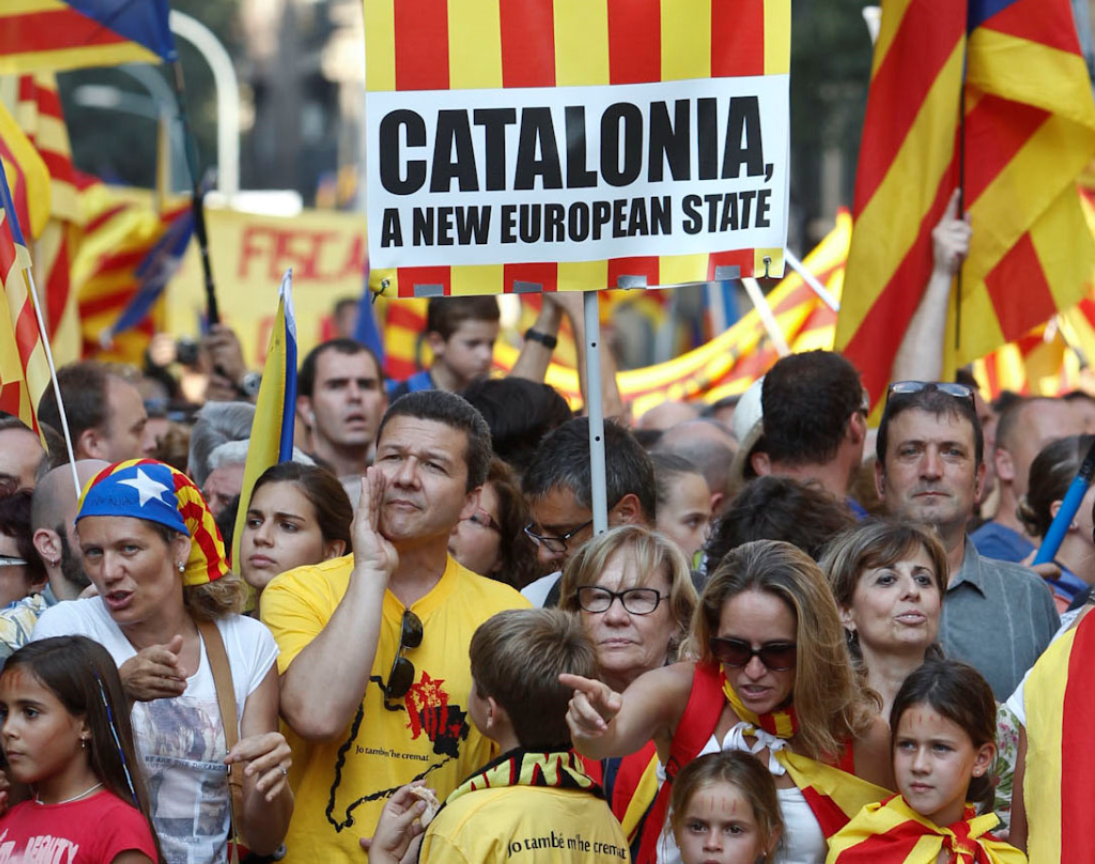By Dan Purizhansky
On October 1st, 2017, the people of Catalonia voted in an independence referendum favoring the creation of a Catalan state. This headline has been flashing over international headlines ever since the vote was held on that Sunday. However, even though the United States had 41 million hispanophones, which is greater than the populations of Venezuela and Panama combined, most Americans do not have a clue about the actual geographic location of Catalonia and more importantly how this referendum affects the rest of the world.
Catalonia is a roughly triangular autonomous region of northeastern Spain that borders France and has a Mediterranean coast. It has a population of roughly 7.5 million and is about 12,000 square miles in size. However, even though it makes up a mere 16% of Spain’s population and 6% of its overall area, it comprises a fifth of Spain’s GDP.
The Catalonian people claim to have several reasons to justify their secession from Spain. One of these, as said by Carles Puigdemont, the president of Catalonia, is that Catalans believe that they are contributing more to Spain’s economy than they receive in return. The Catalan government claim that it would be able to retain up to 8% of their economic output if it did not need to pay taxes to the Spanish government. Another claim brought forth by Catalan separatists is that the Catalans retain a centuries long culture with a unique language and unique customs. They believe that this separates them from the average Spaniard and therefore serves as a reason for independence.
Despite all of these claims, the Spanish government is maintaining a firm stance in discrediting the legitimacy of the referendum. Spanish Prime Minister Mariano Rajoy has asserted that the referendum is a violation of the Spanish constitution while King Felipe of Spain has stated that the referendum is illegal and threatens the unity of the Spanish people. Madrid has vowed to do whatever possible to keep Catalonia as a part of Spain, including imposing direct rule and sending in military support.
The referendum itself occurred in the wake of the Kurdish independence referendum on September 25th. On October 1st, the day of the referendum, the Mossos d’Esquadra were ordered by the highest judicial court in Catalonia to close polling stations. However, they did not execute this order and the Guardia Civil, a police force controlled by the federal government, was ordered to stop people from polling. The Catalan voters resisted and in some places, the Guardia Civil fired rubber bullets at the voters. This violence was condemned by both Amnesty International and the Catalan government, but eventually the police were pulled out. Although 844 people were injured in conflict between voters and police, the Guardia Civil was only able to shut down 27% of polling centers.
The results of the Catalan referendum were revealed on the night after it. The referendum had a turnout of 43%, a low number attributed to people being intimidated by accounts of police brutality at polling centers. However, out of the people that voted, secession from Spain was overwhelmingly supported at 92%.
Carles Puigdemont, the Catalan President, declared the subsequent day that the Catalan people had earned the right to independence. Although he was expected to declare independence, Puigdemont postponed the declaration of independence in favor of establishing a dialogue with Madrid.
However, Soraya Sáenz de Santamaría, the Spanish deputy Prime Minister, gave the Catalan government an ultimatum demanding that Puigdemont must declare whether or not Catalonia will declare independence by Thursday, October 19th. If Catalonia will refuse the ultimatum, Rajoy has threatened to invoke Article 155 of the Spanish Constitution. This will lead to the Spanish federal government taking control of the region’s internal affairs.
If the Catalan government achieves its ultimate goal of seceding from Spain, it will set an important precedent in the 21st century. Catalonia will be a role model, as it will be an example of a rich, first world region successfully separating from another wealthy country sparked initially by a referendum rather than violence.
However, if Catalonia fails, there will be equally important consequences. Other groups desiring autonomy will either learn from the Catalans’ mistakes and alter their strategy in achieving independence or they will be discouraged from attempting to challenge the state they are part of currently altogether.
This is why the Catalonian situation is important to monitor: it can drastically serve as an example for the rest of the world. As a potential showdown between Spain and Catalonia approaches, it is important to observe what happens in its aftermath in Europe and beyond.

